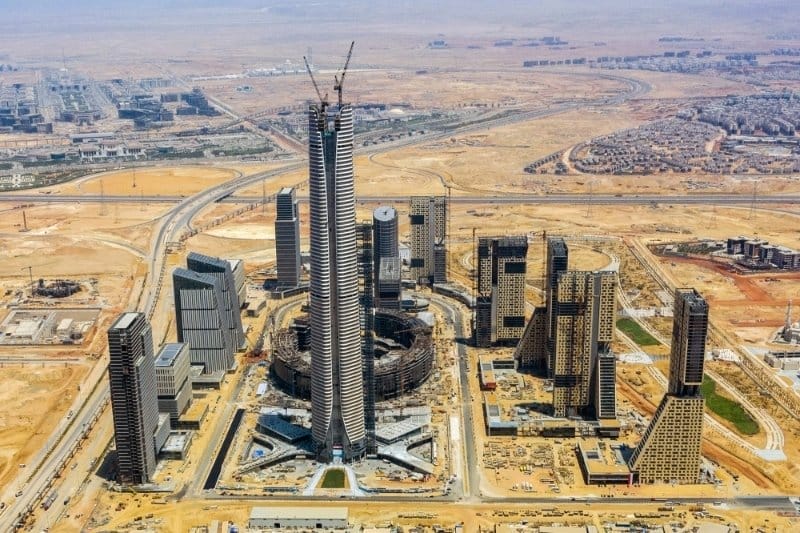Egypt’s New Administrative Capital (NAC), located approximately 45 kilometers east of Cairo, is advancing as one of the country’s most ambitious infrastructure undertakings in recent memory. According to government sources and official project plans, the NAC is intended to alleviate congestion in Cairo while modernizing the nation’s administrative and urban landscape. Spanning roughly 700 square kilometers, the project’s total cost is estimated to fall between $45 billion and $58 billion upon full completion.
ALSO READ: Egypt Posts 4.77% GDP Growth in Q3, Driven by Industrial Recovery
The capital’s development is divided into four phases, with the first phase covering 168 square kilometers. According to the Administrative Capital for Urban Development (ACUD), this initial phase includes key government institutions such as 14 ministries, the new House of Representatives, the presidential palace, and the Iconic Tower, touted as the tallest skyscraper in Africa. The city’s master plan incorporates smart city technologies, integrated surveillance systems, renewable energy solutions, extensive green zones, and a nationwide fiber optic backbone.
Efforts to improve connectivity are underway, with infrastructure developments such as a light rail transit (LRT) system, a monorail currently under construction, and a new international airport. These are intended to facilitate movement between the NAC, Cairo, and nearby regions. However, according to urban mobility analysts, car dependency remains high, and daily commuting challenges persist, casting doubt on whether the project will truly ease Cairo’s chronic congestion.
ALSO READ: Egypt and South Africa Lead Africa’s Smartphone Market Growth as Nigeria Faces Challenges in Q1 2025
Financing for the NAC is primarily managed by ACUD, a state-led entity in which the Egyptian military holds a majority stake. According to official financial disclosures, the funding model relies heavily on land sales and public-private partnerships. Notably, China State Construction Engineering Corporation (CSCEC) is leading the development of the central business district under a long-term build-operate-maintain contract.
Despite the project’s momentum, questions surrounding its economic viability remain. According to World Bank data, Egypt’s GDP per capita stands near $3,000, while average apartment prices in the NAC reportedly start around $50,000, rendering them inaccessible to most Egyptians. Past experiences with satellite cities in Egypt, which often suffered from low occupancy rates, have fueled skepticism about the NAC’s long-term residential appeal.
ALSO READ: The Pyramid of Giza: Egypt’s Timeless Wonder
Furthermore, the project has sparked criticism over governance and equity. Analysts from institutions such as the Carnegie Middle East Center have pointed to the concentration of control under military-affiliated entities, warning that such structures may deter private-sector participation and reduce fiscal transparency. Simultaneously, in the face of macroeconomic pressures and rising inflation, Egypt’s infrastructure spending has come under scrutiny, with the International Monetary Fund (IMF) urging more restrained and targeted public investment.
Nevertheless, the government has begun relocating civil servants to the new capital, with the Ministry of Planning reporting gradual growth in residential occupancy. The future success of the NAC, according to urban development experts, will hinge on its ability to attract a socioeconomically diverse population, deliver affordable housing solutions, and operationalize its infrastructure efficiently, all while managing its broader fiscal impact on the national budget.
While it remains too early to assess whether the NAC can fully achieve its stated objectives, the project’s sheer scale and continued political backing have already made it a landmark initiative within Egypt’s broader urban and economic transformation agenda.

